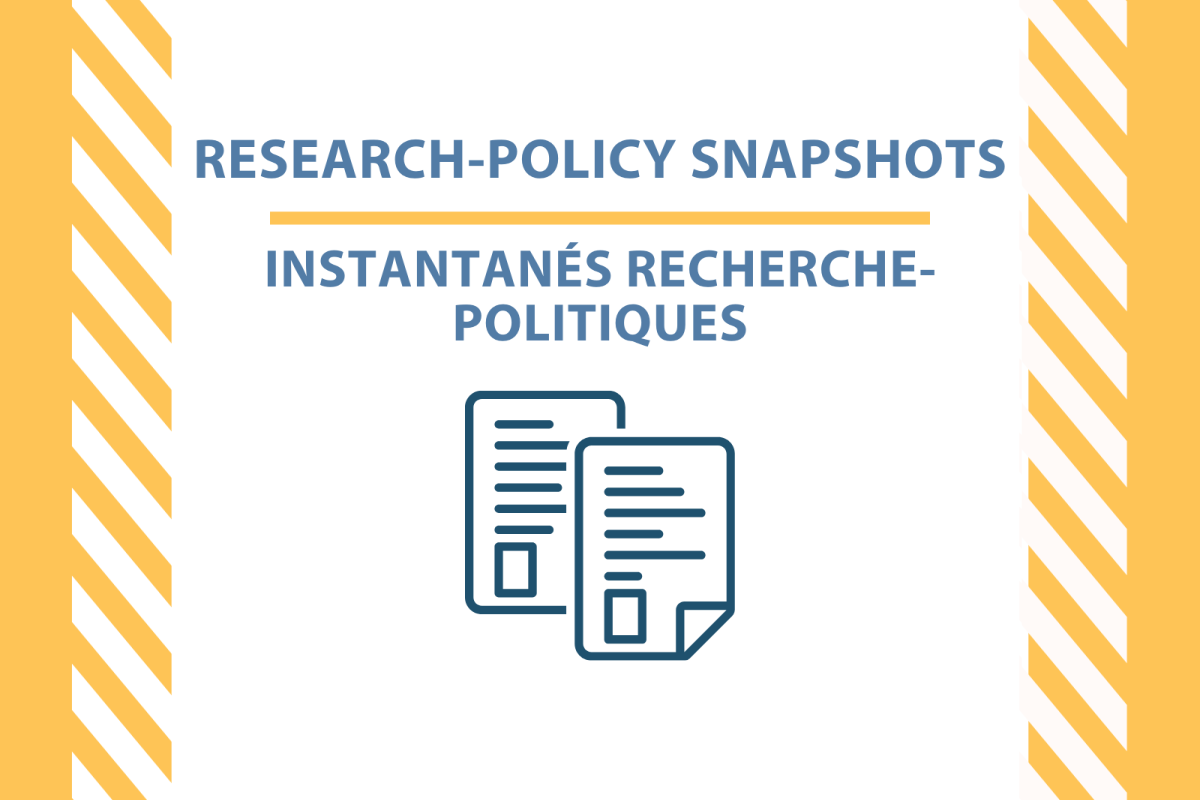CRDCN Research-Policy Snapshots
September 12, 2024

PROOF is a proud member of the Canadian Research Data Centre Network (CRDCN) research community. The following one-page summaries snapshots are our contribution to CRDCN’s research-policy snapshot series, which showcase policy-relevant research using Statistics Canada microdata.
Updated: 2024-09-12
VOLUME 3, NUMBER 2 (JULY 2024)
Employment Insurance reduces the impact of unemployment on food security (PDF )
Based on: Men, F., & Tarasuk, V. (2023). Employment Insurance may mitigate impact of unemployment on food security: Analysis
on a propensity-score matched sample from the Canadian Income Survey. Preventive Medicine, 169, 107475. https://doi.org/10.1016/j.ypmed.2023.107475.
Understanding food insecurity and overweight or obesity in Canada (PDF )
Based on: Fafard St-Germain, A.-A., Hutchinson, J., & Tarasuk, V. (2024). The relationship between household food insecurity and overweight or obesity among children and adults in Canada: A population-based, propensity score weighting analysis. Applied Physiology, Nutrition, and Metabolism, 49(4), 473-486. https://doi.org/10.1139/apnm-2023-0302.
Based on: Wang, Y., St-Germain, A.-A. F., & Tarasuk, V. (2023). Prevalence and sociodemographic correlates of food insecurity among post-secondary students and non-students of similar age in Canada. BMC Public Health, 23(1), 954. https://doi.org/10.1186/s12889-023-15756-y.
VOLUME 3, NUMBER 1 (JANUARY 2024)
Based on: Men, F., St-Germain, A. A. F., Ross, K., Remtulla, R., & Tarasuk, V. (2023). Effect of Canada Child Benefit on Food Insecurity: A Propensity Score− Matched Analysis. American Journal of Preventive Medicine, 64(6), 844-852. https://doi.org/10.1016/j.amepre.2023.01.027
VOLUME 2, NUMBER 1 (JANUARY 2023)
Food-insecure Canadians are more likely to visit emergency departments due to pain (PDF )
Based on: Men, F., Urquia, M. L., & Tarasuk, V. (2022). Pain-driven emergency department visits and food insecurity: a cross-sectional study linking Canadian survey and health administrative data. CMAJ Open, 10(1), E8-E18.https://doi.org/10.9778/cmajo.20210056
How household food insecurity is classified matters for monitoring and research (PDF )
Based on: Men, F., & Tarasuk, V. (2022). Classification Differences in Food Insecurity Measures between the United States and Canada: Practical Implications for Trend Monitoring and Health Research. The Journal of Nutrition, 152(4),
1082-1090.https://doi.org/10.1093/jn/nxab447
VOLUME 1, NUMBER 2 (JULY 2022)
Based on: Men, F., Urquia, M. L., & Tarasuk, V. (2021). The role of provincial social policies and economic environments in shaping food insecurity among Canadian families with children. Preventive Medicine, 148, 106558. https://www.doi.org/10.1016/j.ypmed.2021.106558
Based on: Men, F., Elgar, F. J., & Tarasuk, V. (2021). Food insecurity is associated with mental health problems among Canadian youth. Journal of Epidemiology and Community Health, 75(8), 741–748. https://www.doi.org/10.1136/jech-2020-216149
Food insecurity is associated with chronic pain and prescription opioid use (PDF )
Based on: Men, F., Fischer, B., Urquia, M. L., & Tarasuk, V. (2021). Food insecurity, chronic pain, and use of prescription opioids. SSM – Population Health, 14, 100768. https://www.doi.org/10.1016/j.ssmph.2021.100768
VOLUME 1, NUMBER 1 (JANUARY 2022)
Food insecurity in Nunavut worsened following the introduction of Nutrition North Canada (PDF )
Based on: Fafard St-Germain AA, Galloway T, Tarasuk V. Food insecurity in Nunavut following the introduction of Nutrition North Canada. CMAJ 2019:191(20);E552-E558. https://www.cmaj.ca/content/191/20/E55
Food insecurity is associated with higher health care use and costs among Canadian adults (PDF )
Based on: Men, F., Gundersen, C., Urquia, M. L., & Tarasuk, V. (2020). Food Insecurity Is Associated With Higher Health Care Use And Costs Among Canadian Adults. Health Affairs, 39(8), 1377-1385. https://www.healthaffairs.org/doi/10.1377/hlthaff.2019.01637
The relationship between homeownership and food insecurity (PDF )
Based on: St-Germain, A.A.F., & Tarasuk, V. (2020). Homeownership status and risk of food insecurity: examining the role of housing debt, housing expenditure and housing asset using a cross-sectional population-based survey of Canadian households. International journal for equity in health, 19(1), 1-12. https://equityhealthj.biomedcentral.com/articles/10.1186/s12939-019-1114-z
Based on: Brown, E. M., & Tarasuk, V. (2019). Money speaks: Reductions in severe food insecurity follow the Canada Child Benefit. Preventive Medicine, 129. https://doi.org/10.1016/j.ypmed.2019.105876
